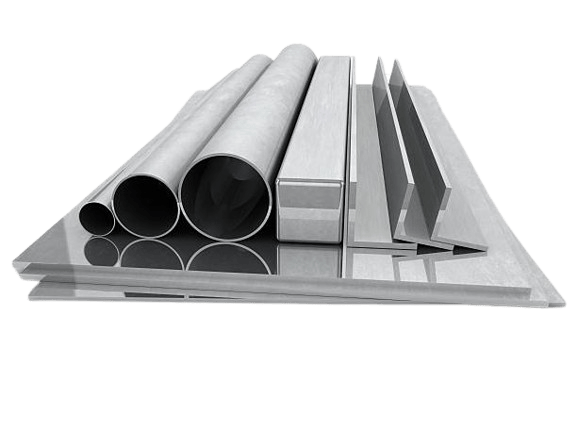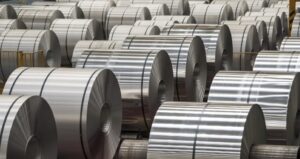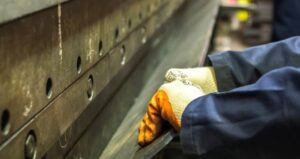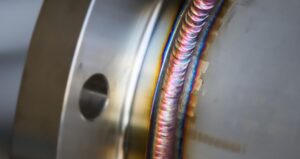When delving into the world of aluminum alloys, B390 aluminum stands out as a material with unique properties and applications. In this comprehensive guide, we will explore the intricacies of B390 aluminum, shedding light on its composition, characteristics, uses, and advantages.
What Is B390 Aluminum?

B390 aluminum is a high-strength alloy lauded for its exceptional machinability and mechanical properties. Predominantly comprising aluminum, it is fortified with elements like copper, magnesium, and zinc to bolster its durability and strength. This alloy is favored in applications necessitating precision machining and a high strength-to-weight ratio. Referred to as SC174B and A23900, B390 aluminum was devised for casting processes and is recognized as ASTM SC174B in historical texts, with A23900 serving as its UNS number. Designated as B390 (ANSI/AA B390.0) by the Aluminum Association, it finds primary application in automotive engine blocks and is also valued for crafting die cast valve bodies and sleeve-less piston housings.
B390 Aluminum Chemical Composition
Copper (Cu) | Iron (Fe) | Magnesium (Mg) | Manganese (Mn) | Nickel (Ni) | Silicon (Si) | Titanium | Zinc (Zn) |
4-5% | ≤1.3% | 0.45-0.65% | ≤0.35% | ≤0.1% | 16-18% | ≤0.2% | ≤0.5% |
In the composition of B390 aluminum, silicon stands out as the predominant alloying element, ranging from 16% to 18%. This concentration surpasses that of A380 and is instrumental in enhancing the alloy’s wear resistance. Moreover, the elevated silicon content in B390 aluminum boosts its fluidity, facilitating a seamless flow into intricate molds during the die-casting process. This characteristic enables the casting of elaborate and precise parts with ease.
Mechanical Properties Of B390 Aluminum
Hardness, Brinell | Tensile Strength,Ultimate / Mpa | Tensile Strength, Yield / Mpa | Elongation % in 2in |
120 | 317 | 248 | ≤1.0 |
Although B390 aluminum boasts very high wear resistance, it is important to note that its ductility ranks as the lowest among casting alloys. This aspect should be considered when selecting a material for applications where ductility plays a crucial role. If ductility is a key factor in your application, B390 may not be the most suitable choice despite its exceptional wear resistance.
Physical Properties Of B390 Aluminum
Melting Point / °C | Thermal Conductivity (W/m-K) | Thermal Expansion (µm/m-K) | Density (g/cm^3) | Mechanical Maximum Temperature / °C | Latent Heat of Fusion (J/g) |
580 | 130 | 20 | 2.8 | 170 | 640 |
Notably, aluminum alloys with high thermal conductivity, such as B390, are well-suited for die-casting applications. This attribute is particularly advantageous in industries where efficient heat dissipation is critical for ensuring optimal performance and durability of components.
Advantages Of B390 Aluminum

B390 aluminum offers several advantages in the die-casting process due to its unique chemical composition, mechanical properties, and physical properties:
High Silicon Content
The elevated silicon content (16-18%) in B390 enhances its wear resistance significantly, making it ideal for applications requiring durability against wear and tear.
Alloying Elements
Elements like copper, magnesium, and zinc contribute to the alloy’s strength and machinability, ensuring robust and easily machinable components.
High Hardness
With a Brinell hardness of 120, B390 is suitable for applications requiring resistance to surface indentation and wear.
Low Ductility
While B390 may have low ductility, its high strength properties make it suitable for applications prioritizing strength over flexibility.
Thermal Conductivity
B390’s thermal conductivity of 130 W/m-K aids in efficient heat dissipation, crucial in die-casting applications to prevent overheating and maintain component performance.
Melting Point
With a melting point of 580 °C, B390 can withstand the high temperatures involved in the die-casting process, ensuring proper flow and casting of intricate parts.
Key Use Of B390 Aluminum

Transmission Components
B390 aluminum is commonly utilized in the automotive industry for manufacturing transmission components, making it one of the most prevalent applications for this alloy.
The high wear resistance and strength of B390 aluminum are crucial for transmission components, which undergo significant mechanical stress and friction during operation.
The use of B390 aluminum in transmission parts offers benefits such as improved durability, reduced weight compared to traditional materials, and enhanced thermal conductivity for efficient heat dissipation. These advantages contribute to the overall performance and longevity of automotive transmissions, making B390 aluminum a preferred material for this critical application in the automotive sector.
Engine Cylinders
B390 aluminum is commonly employed in the manufacturing of engine cylinders, particularly in applications such as:
-
Motorcycle Engine Cylinders:
- Motorcycle engines benefit from B390 aluminum cylinders due to their high wear resistance and strength. The material’s ability to withstand the intense heat and mechanical stress in motorcycle engines makes it a suitable choice for ensuring durability and performance.
-
Small Engine Cylinders (e.g., lawn mowers, chainsaws):
- Small engines, such as those in lawn mowers and chainsaws, often utilize B390 aluminum cylinders for their lightweight nature and excellent thermal conductivity. These properties help in efficient heat dissipation and contribute to the overall efficiency and longevity of these engines.
-
Performance Racing Engine Cylinders:
- High-performance racing engines often incorporate B390 aluminum cylinders due to their superior strength-to-weight ratio. The alloy’s properties aid in reducing weight while maintaining durability, essential for performance-driven applications.
-
Marine Engine Cylinders:
- Marine engines, which operate in demanding conditions, benefit from B390 aluminum cylinders for their corrosion resistance and thermal conductivity. These qualities help marine engines withstand harsh marine environments and ensure optimal performance.



















